On testing and writing new recipes
When I stopped writing a simple account of what was happening in my kitchen, and started focusing on what might be happening in your kitchen
This newsletter is a reader-supported publication. We’re trying to keep things as free as possible, but if you enjoy what I write and want access to exclusive weekly recipes, and if you are at a point in your life to support our newsletter, please consider becoming a paid subscriber. Thank you!
There’s nothing more disappointing than a recipe that doesn’t work.
When I started blogging, 14 years ago, I didn’t know anything about recipe development. I would cook something that I liked, taking quick notes on a piece of paper, and the day after I would transfer my notes on a blog post. Done.
My recipes were a report of what had happened the night before in my mum’s kitchen. A clear signal of this approach was the use of the first-person singular pronouns: I cooked the pasta, I prepared a sauce with what I found in the fridge. Next time, I would swap this for that. I cooked this for that amount of time, instead of what the recipe required.
I do not have a culinary degree, so everything I know regarding recipe development is due to being a (cook)book worm, to hours spent listening to podcasts, or reading newsletters, and to a lot of practice (cook, eat, clean, write, repeat).
I am a home cook who writes for other home cooks.
The major mental shift that changed my approach to recipe writing happened when I stopped writing a mere report of what had happened in my kitchen, and started focusing on what could happen in your kitchen.
I want to be a friendly voice, someone cooking along with you in your kitchen: this takes into account critical steps, possible mistakes, different techniques and skill levels, anticipating challenges and the use of different ingredients. I shouldn't write just the chronicle of what happened in my kitchen, as I am, instead, writing a recipe for other cooks in other kitchens who will be cooking my recipe in a future different time.
And in order to do this, you must be generous. Generous in the amount of details given, in sharing little tips, descriptions, and explanations that can be applied also to other recipes.
My aim is to make the reader a better cook, to write recipes that activate the readers’ senses: they will have a clear, satisfying image of the food they are going to cook, they will know what will happen in the kitchen, and how they will feel about it. This makes food more accessible.
I am a better cook and a better recipe writer because I’ve been teaching cooking classes for more than 10 years.
Teaching pushes you out of your comfort zone, and outside of the dialogue in your mind. I have the privilege of seeing my recipes cooked by other people, with different approaches, skill levels, culinary cultures, and habits. I can ask them what they find tricky in a recipe, what is not clear. We talk together about how to improve the experience of cooking that recipe, which ingredients could be available and which not, how to serve it, how to deal with leftovers. A recipe becomes a conversation and a story with an open end.
My recipes are my favourite way to share a glimpse of the Italian country life, and hopefully they will give you also tips on how to make it replicable in your home kitchen.
My cooking class students are my Guinea pigs. Thanks to them, I managed to fill that gap of being an Italian writing Italian recipes for an international audience. This could be limiting, as you could rely on habits, give things for granted, and be blind to other people’s practices.
As an example, the Zucchini Cacio e pepe sauce for pasta is a recipe that we tested and developed last year during our cooking classes, something I can’t wait to reintroduce into our menu in a couple of weeks. Same can be said for the baked stuffed squash blossoms, a hit during our summer cooking classes.
You are my Guinea pigs, too.
Your continuous and immediate feedback on the recipes we share is the best touchstone to understand if something works or not, if it is doable in other kitchens, if it keeps its promises in terms of taste, cooking expectations and satisfactions.
So you can imagine how disheartening it was to receive this as first ever review on Amazon for our cookbook, Cucina Povera. I read it just before going to bed and had nightmares all through the night. Lesson learnt: stop using your phone after dinner time.
Not only the recipes have been tested multiple times in my kitchen—and some of them were indeed nerve-racking, even the joy of finding a solution to a testing problem is priceless—, but they were also tested in an American kitchen by a professional recipe tester, using local ingredients. And let me say that you can perfectly peel the veal tongue when it is cold: doing things differently doesn’t mean that one method is wrong and one is correct.
We have always considered a form of respect for your time, commitment, trust, and money to thoroughly test the recipes that end up in a book. With our previous cookbook, From the Markets of Tuscany, we had more than 60 enthusiastic recipe testers—some of you are here, too!—who tested the recipes and gave us invaluable feedback.
To be honest, we can’t wait to have the chance to go through the entire process again, to work on new recipes, test them, imagine them in your kitchen, and wrap them in a new book!
I’m still far from being able to ignore bad reviews, but now at least I manage to laugh at them, as with the one saying I find it hard to believe Italians eat that stuff: hello, I’m Italian, that’s the food I eat. But this could open another lengthy discussion on what Italian food is now, and what is instead the perception of Italian food and the stereotypes narrated by media and, I’m afraid to say this, even by the same Italian Minister of Tourism (have you seen the new campaign Open to Meraviglia?)
So, if you happen to have Cucina Povera and have already made one or two recipes and liked them, you can help us by leaving a review on Amazon! Thank you!
My recipe writing philosophy has been influenced by the following articles and resources:
Other Kitchens, Other Cooks: Generosity in Recipe Writing, on
Sticklers, Improvisors, and “Following” Recipes, on
Each and every single episode of Everything Cookbook Podcast, especially Ep. 05: Getting Started Writing Your Recipes, Ep. 06: Getting Your Recipes in Shape with Tina Ujlaki, and Ep. 27: When Less is More: Ali Slagle on the Art of Short Recipes.
I just read the latest essay on
's newsletter, On Recipe Writing, and I found it mind-blowing. I know I need to let it sit for a while, and I’ll be back reading it in a couple of days to find yet more inspiration and food for thought.
“ (…) food writers are more than the sum of their recipes, and food deserves to be engaged with beyond mere consumption. I want to believe that recipes, like cooking, can be just another part of the ebb and flow of a life.” - Alicia Kennedy
**SPOILER**
On Friday I’ll be sharing for paid subscribers the recipe for these saffron tagliatelle dressed with fried artichokes and an artichoke and pecorino purée, a recipe I tested multiple times during recent cooking classes. It works also with pici pasta, and the same flavour combination could be used in a risotto.
It’s my favourite Spring pasta recipe so far, so you don’t want to miss it.
SIDE NOTE
The day is finally here: after months of delay, I've started emptying out our home kitchen so Tommaso can fix everything before the new one arrives. Even though this is just our home kitchen, this is where I cook our meals twice a day, where I bake bread, and where I tested most of the recipes of Cucina Povera and where, hopefully, we’ll test a new cookbook, too. We’re planning to build our new kitchen around the old marble table that has been in my family since the 1940s (read the full story below).
Cooking Experiences in Tuscany with us
Do you know we also offer in-person cooking classes and edible experiences in Tuscany? Our calendar is slowly filling up, over 300 people have already booked a class this year, and there are only a few days left available during the high season. And yes, bookings for 2024 are already open, too!
Every meal will be an excuse to travel through Tuscany thanks to local recipes, memories and stories. Learn more about our cooking classes here.
Next available openings:
Wednesday, June 7th - Market to Table Cooking Class - 2 spots available
Thursday, June 8th - Tuscan Cooking Class - 4 spots available
Tuesday, July 4th - Tuscan Cooking Class - 3 spots available
Wednesday, July 19th - Market to Table Cooking Class - 6 spots available

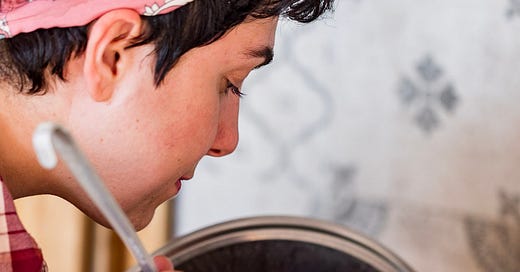



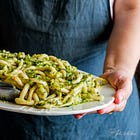
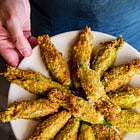

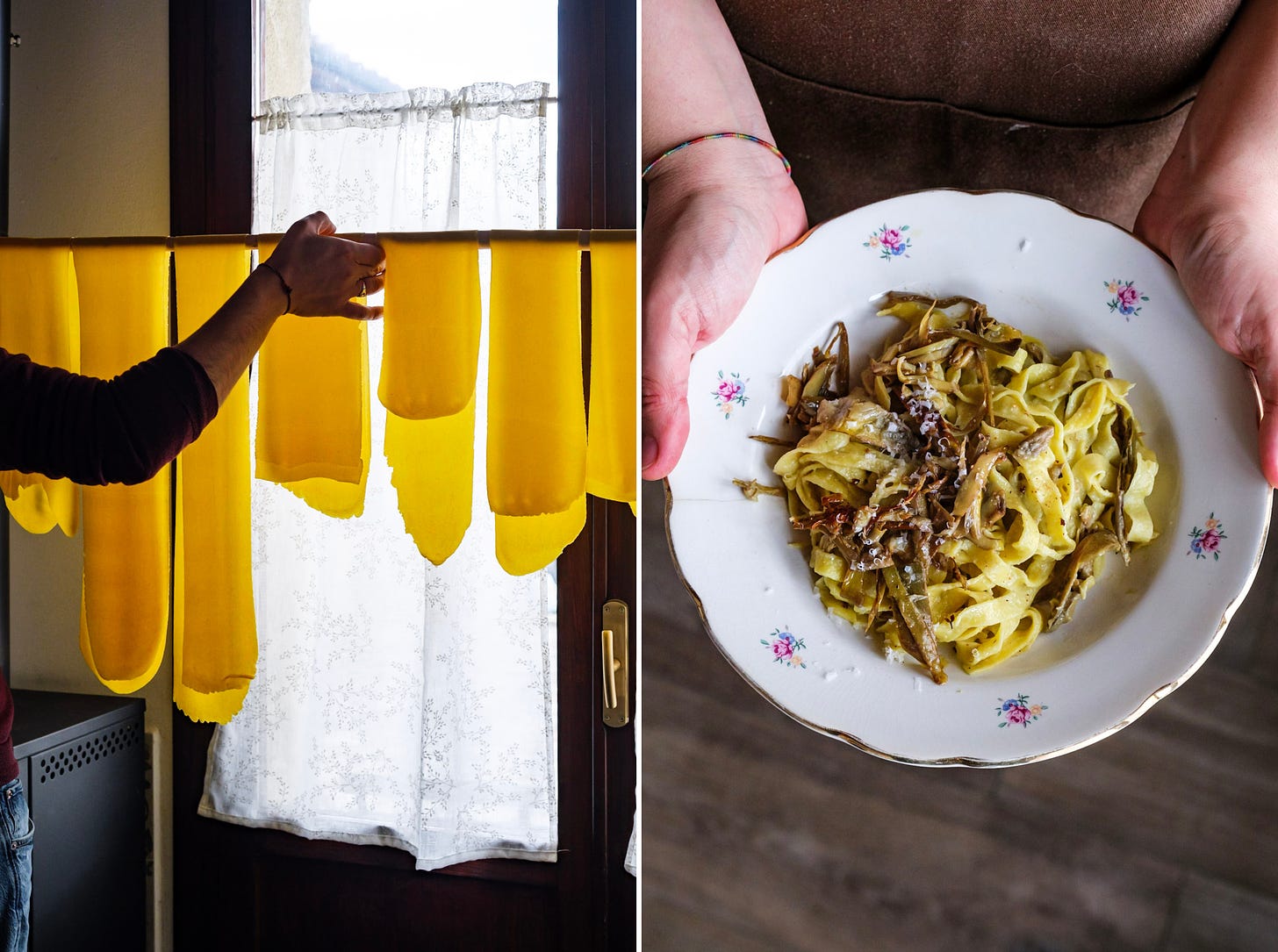
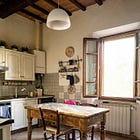

Very lucky to have been a guinea pig for the zucchini cacio e pepe pasta! :D
This is lovely Giulia, and I am so glad SPN articles have informed your writing! Thank you for reading (and for writing!).